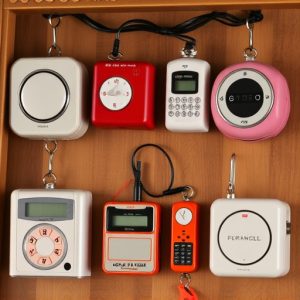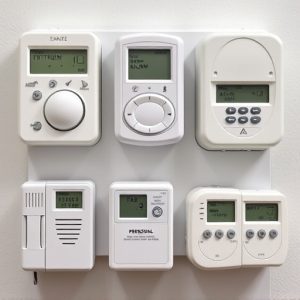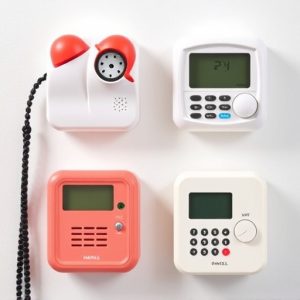Personal Safety Devices: Protecting You in Emergency Situations Across Buildings
Personal alarm ranges designed for buildings are vital tools enhancing individual safety and enablin…….
Personal alarm ranges designed for buildings are vital tools enhancing individual safety and enabling quick emergency responses. These devices, from basic manual models to advanced smart home-integrated units with GPS tracking, offer diverse functionalities catering to specific needs. Selection requires understanding the building environment, including space size, obstructions, and specific areas like corridors or courtyards, to ensure optimal distress signal coverage. With a typical range of several hundred feet, personal alarms prove effective in various scenarios, from crowded public spaces to residential buildings, signaling emergencies and ensuring swift response times through loud, piercing sounds that cut through disorientation or fear.
Personal safety devices are crucial for emergency situations, offering vital protection in buildings. This comprehensive guide explores why these devices are essential and delves into the various types available, from basic to advanced features. We’ll navigate choosing the right personal alarm based on your environment and highlight effective use cases within buildings. Discover the best practices for leveraging personal alarm ranges to enhance safety and peace of mind.
- Understanding Personal Safety Devices: Why They're Essential
- Types of Personal Alarms: From Basic to Advanced Features
- Choosing the Right Personal Alarm for Your Environment: Considerations for Buildings
- Effective Use Cases and Real-World Applications of Personal Alarm Devices in Buildings
Understanding Personal Safety Devices: Why They're Essential
Personal safety devices are indispensable tools for emergency situations, offering individuals a sense of security and empowerment. These devices cater to various needs, from personal alarms that can be easily carried and activated in distressing scenarios, to GPS trackers that enable rapid location in large buildings or remote areas. Understanding the importance of these tools is crucial, especially considering their ability to make a significant difference during critical moments.
In enclosed spaces like buildings, a Personal Alarm Range plays a vital role in ensuring swift response times. These alarms are designed to be loud and attention-grabbing, facilitating quicker rescue efforts. Moreover, with advancements in technology, many personal safety devices now offer real-time tracking capabilities, allowing loved ones or emergency services to locate individuals promptly. This is particularly beneficial in vast or labyrinthine structures where navigating can be challenging during an emergency.
Types of Personal Alarms: From Basic to Advanced Features
Personal alarms come in a wide range, from basic to advanced devices designed for different needs and environments. At their core, they serve as a loud, attention-grabbing signal to alert others when someone is in distress. Basic models typically involve a manual trigger, such as a press button, that sets off a piercing siren, often with a strobe light for added visibility. These are ideal for everyday carry or travel, ensuring you have a reliable way to call for help if needed.
Advanced personal alarms, on the other hand, offer more sophisticated features like longer battery life, automatic fall detection, GPS tracking, and even integration with smart home systems or emergency services. Some models can be attached to clothing or carried as a handheld device, while others are designed for specific situations—like personal protection during outdoor activities or for individuals living alone who require extra peace of mind. For instance, in buildings, advanced personal alarms can be strategically placed for easy access, ensuring quick response times during emergencies within residential or commercial spaces.
Choosing the Right Personal Alarm for Your Environment: Considerations for Buildings
When selecting a personal alarm for buildings, understanding your environment is key. Different spaces present unique challenges and requirements regarding personal safety devices. For instance, in large or multi-storey buildings, consider the Personal Alarm Range – how far the signal can effectively reach. You may need a device with a stronger, longer-range alarm to ensure your distress call is heard throughout the building, especially in areas with high walls or partition barriers that could obstruct sound.
Additionally, think about the type of spaces within the building. Are there enclosed corridors, open-plan offices, or outdoor courtyards? Some personal alarms are better suited for specific environments. For example, those designed for outdoor use may have a different range and water resistance compared to indoor models. Choosing the right alarm that caters to these factors ensures its effectiveness during an emergency, providing peace of mind and quick response times.
Effective Use Cases and Real-World Applications of Personal Alarm Devices in Buildings
Personal alarm devices have proven their effectiveness in various emergency scenarios within buildings. Their primary role is to draw immediate attention and alert authorities or neighbors when an individual finds themselves in distress, ensuring swift response times. These devices are especially crucial in public spaces, high-rise apartments, and offices where panic can quickly escalate. The loud, piercing sounds serve as a universal signal for help, breaking through potential disorientation or fear that might hinder clear communication.
Real-world applications showcase the impact of personal alarms in improving safety. For instance, in crowded places like shopping malls or concert venues, an individual facing an emergency can activate their device, alerting staff and nearby patrons without causing widespread panic. Similarly, in residential buildings, residents can use these alarms to signal non-emergency situations like false fire alarms or personal emergencies, ensuring efficient management of resources. The effective range of these devices—typically covering several hundred feet—ensures they are usable even from a distance, making them valuable tools for quick response during building-related emergencies.
Personal safety devices, particularly personal alarm ranges designed for buildings, are invaluable tools that can significantly enhance emergency preparedness. By understanding different types and their advanced features, one can choose the most suitable device for specific environments. Proper deployment and effective use cases, as highlighted in this article, underscore the crucial role these alarms play in ensuring individual security within structures. Investing in such devices is a proactive step towards mitigating risks and fostering a safer living or working environment.


